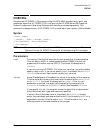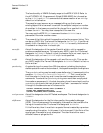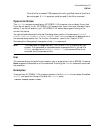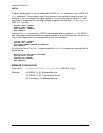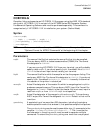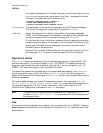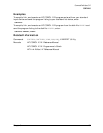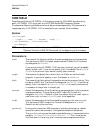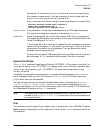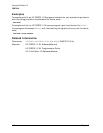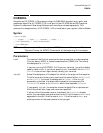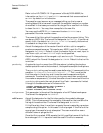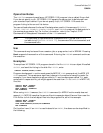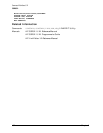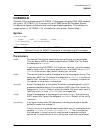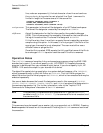
Chapter 3 147
Command Definitions C-E
COB74XLK
commands. To extend the quotedstring string over more than one physical
line, make an ampersand (&) the last character of one line and continue
the quotedstring string onto the next physical line.
Each $ command is limited in length to the same size as in the source file:
COB74XLK SALARIES,SALPRG;INFO="$CONTROL &
BOUNDS,MAP,VERBS$SET&$X9=ON" &
COB74XLK ACCOUNTS;INFO="$DEFINE %A=5#"
workspacename This parameter is the actual file designator of an HPToolset workspace.
The formal file designator created by the compiler is COBWKSP.
xdbfilename Actual file designator for the file to be used by XDB. This is a permanent
file created by the compiler that contains the listing of the source files. The
formal file designator is COBXDB.
If this file exists, then it must be in a special format created by a previous
compile using this option. In this case it is first purged. If the file is of the
wrong type, the compile is not attempted. The user must either use a
different name or purge the file.
Once the file is created, XDB expects the fully qualified name of the file to
be unchanged. A FILE equation could be used if the file is renamed.
Operation Notes
The COB74XLK command compiles and links an HP COBOL II/iX program into a disk file.
If you do not specify textfile, HP COBOL II/iX expects your input from your standard input
device. If you do not specify listfile, HP COBOL II/iX sends the listing output to your
current list device.
The object file created during compilation is a system-defined temporary file, $NEWPASS,
which is passed directly to the Link Editor as $OLDPASS. The Link Editor overwrites
progfile which can then be executed.
You cannot backreference the formal file designators used in this command (COBTEXT,
COBLIST, COBMAST, COBNEW, COBWKSP, and COBXDB) as actual file designators in the
command parameter list. For further information, refer to the "Implicit FILE Commands
for Subsystems" discussion of the FILE command.
NOTE This command is implemented as a command file. If you set the HPPATH
variable to null (SETVAR HPPATH ""), the command file is not executed, and
the command fails.
Use
This command may be issued from a session, job, or program but not in BREAK. Pressing
Break suspends the execution of this command. Entering the RESUME command continues
the execution.



